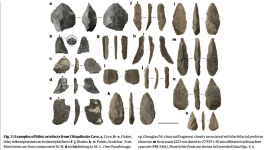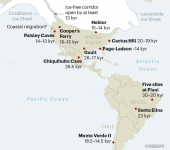1320
Silver Member
If someone where to post a picture in this forum of the artifact shown in the article, I have no doubt it would be labeled a "rock" lol. And I'd probably agree.
https://www.nationalgeographic.com/...ve-discovery-mexico-double-peopling-americas/
https://www.nationalgeographic.com/...ve-discovery-mexico-double-peopling-americas/
Upvote
0






